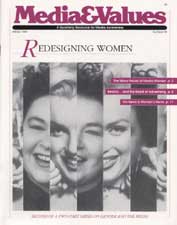CHILDREN: Questions Help Challenge False Images
|
This article originally appeared in Issue# 49
|
As children grow beyond the preschool years, they begin to focus more on getting along with social groups than pleasing adults or merely making friends. At the same time, by the third or fourth grade, they gain control of the channel selector and begin to watch adult TV shows.
Parents who have been supervising young children's viewing since preschool may be tired out. Overseeing this age group's viewing is even more difficult. But it may be even more important. Children who were exposed to a variety of realistic female roles on child-centered programs like Sesame Street are suddenly immersed in the glamorous world of prime time television. To the third graders I know, the message is clear: to be admired, women must be beautiful, thin, well-dressed and well-coiffed.
Parents and teachers can help children learn to ask the right questions to interpret the limitations of these feminine images:
- Do grownup women they know look like their favorite TV heroines?
- Do they want to be like them when they grow up?
- What do they admire most about them?
- Would they want to dress like that?
- Does everyone doing that job look like that?
Children need help to interpret what they see, and young girls, particularly, need support for their self-esteem. Parents and teachers can help them learn that intelligence, creativity and leadership skills are more important than the media's often superficial standards. Only then can they be all they can be.



